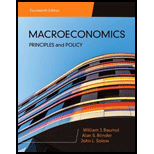Suppose Home has 200 units of labor. It can produce two goods, apples and bananas. In Home a worker can produce 3 apples or 4 bananas. a. Graph Home's PPF, with apples in the horizontal axis. b. What is the opportunity cost of apples? c. In the absence of trade - when Home is isolated - what would the relative price be? d. Now suppose there is another country, Foreign, with a labor force of 200. In Foreign a worker can produce 2 apples or 5 bananas. e. Graph Foreign's PPF, with apples in the horizontal axis. f. Construct the world relative supply curve, expressing the relative price of apples (PA/PB) in terms of the relative quantity of apples (QA/QB). g. Now suppose that world relative demand takes the following form: RD: QA QB = PB PA h. Graph the relative demand curve together with the relative supply curve. i. What is the equilibrium relative price of apples? j. Describe the pattern of trade (who exports what). k. Assume Home workers are less productive in both industries. What happens (conceptually) to the gains from trade for each country compared to before?
Suppose Home has 200 units of labor. It can produce two goods, apples and bananas. In Home a worker can produce 3 apples or 4 bananas. a. Graph Home's PPF, with apples in the horizontal axis. b. What is the opportunity cost of apples? c. In the absence of trade - when Home is isolated - what would the relative price be? d. Now suppose there is another country, Foreign, with a labor force of 200. In Foreign a worker can produce 2 apples or 5 bananas. e. Graph Foreign's PPF, with apples in the horizontal axis. f. Construct the world relative supply curve, expressing the relative price of apples (PA/PB) in terms of the relative quantity of apples (QA/QB). g. Now suppose that world relative demand takes the following form: RD: QA QB = PB PA h. Graph the relative demand curve together with the relative supply curve. i. What is the equilibrium relative price of apples? j. Describe the pattern of trade (who exports what). k. Assume Home workers are less productive in both industries. What happens (conceptually) to the gains from trade for each country compared to before?
Economics Today and Tomorrow, Student Edition
1st Edition
ISBN:9780078747663
Author:McGraw-Hill
Publisher:McGraw-Hill
Chapter18: Trading With Other Nations
Section: Chapter Questions
Problem 8AA
Related questions
Question
Need help understanding parts H,I,J and K.

Transcribed Image Text:Suppose Home has 200 units of labor. It can produce two goods, apples and bananas. In
Home a worker can produce 3 apples or 4 bananas.
a. Graph Home's PPF, with apples in the horizontal axis.
b. What is the opportunity cost of apples?
c. In the absence of trade - when Home is isolated - what would the relative price be?
d. Now suppose there is another country, Foreign, with a labor force of 200. In Foreign a
worker can produce 2 apples or 5 bananas.
e. Graph Foreign's PPF, with apples in the horizontal axis.
f. Construct the world relative supply curve, expressing the relative price of apples (PA/PB)
in terms of the relative quantity of apples (QA/QB).
g. Now suppose that world relative demand takes the following form:
RD:
QA
QB
=
PB
PA
h. Graph the relative demand curve together with the relative supply curve.
i. What is the equilibrium relative price of apples?
j. Describe the pattern of trade (who exports what).
k. Assume Home workers are less productive in both industries. What happens
(conceptually) to the gains from trade for each country compared to before?
Expert Solution
This question has been solved!
Explore an expertly crafted, step-by-step solution for a thorough understanding of key concepts.
Step by step
Solved in 2 steps with 1 images

Recommended textbooks for you

Economics Today and Tomorrow, Student Edition
Economics
ISBN:
9780078747663
Author:
McGraw-Hill
Publisher:
Glencoe/McGraw-Hill School Pub Co

Brief Principles of Macroeconomics (MindTap Cours…
Economics
ISBN:
9781337091985
Author:
N. Gregory Mankiw
Publisher:
Cengage Learning

Economics (MindTap Course List)
Economics
ISBN:
9781337617383
Author:
Roger A. Arnold
Publisher:
Cengage Learning

Economics Today and Tomorrow, Student Edition
Economics
ISBN:
9780078747663
Author:
McGraw-Hill
Publisher:
Glencoe/McGraw-Hill School Pub Co

Brief Principles of Macroeconomics (MindTap Cours…
Economics
ISBN:
9781337091985
Author:
N. Gregory Mankiw
Publisher:
Cengage Learning

Economics (MindTap Course List)
Economics
ISBN:
9781337617383
Author:
Roger A. Arnold
Publisher:
Cengage Learning



Essentials of Economics (MindTap Course List)
Economics
ISBN:
9781337091992
Author:
N. Gregory Mankiw
Publisher:
Cengage Learning